Frequently Asked Questions
Frequently Asked Questions
Below you will find answers to key questions on disaster risk reduction.
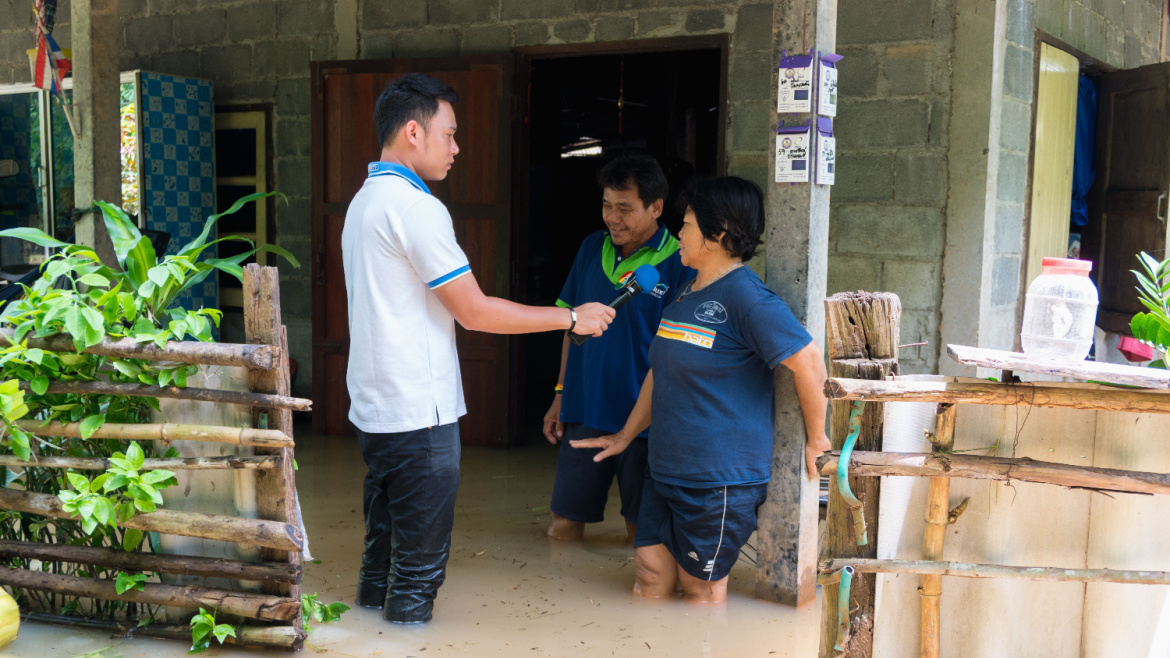
Why is DRR not a government priority?
Disaster Risk Reduction (DRR) is often not a priority issue because it requires long-term investment and the rewards may not be visible during an elected government’s term of office. DRR measures are seen as insurance against something that might happen, but not necessarily linked to immediate danger. If DRR measures work well, they represent an invisible success; if there has been no disaster then nobody is conscious of this success, so there is no political reward. Climate change and the measurable increase in the number of disasters worldwide is changing those calculations, however. When they cause significant damage to infrastructure, disasters can threaten national security and popular support for elected officials.
Is DRR really cost effective?
Investment in disaster risk reduction generally represents a large saving in terms of avoided losses and reconstruction costs with cost benefit ratios ranging from 3:1 to 15:1 - or higher in some cases, according to a study published in UNDRR’s 2015 Global Assessment Report on Disaster Risk Reduction. Both the World Bank and the US Geological Survey believe risk management can deliver significant benefits, and that economic losses worldwide from disasters in the 1990s could have been reduced by US$280 billion if US$40 billion had been spent on preventive measures. The World Meteorological Organization (WMO) believes US$1 invested in prevention could save US$7 in recovery. The United States Federal Emergency Management Agency (FEMA) says US$1 invested in prevention saves between US$4-7 in recovery.
Is disaster risk a development issue?
Yes, disasters and disaster risk reduction are a development issue. DRR has been clearly recognized as fundamental to achieving the 2030 Development Agenda and the 17 Sustainable Development Goals.
What are the limits of DRR?
DRR can reduce the impact of disasters, but it cannot make a region or a nation totally disaster-proof. Early warning systems can reduce the impact of a tsunami if people know what to do when an alert is issued but cannot protect someone on the beach from a 10-metre wave. Communities have different capacities to face disasters, but even wealthy countries that spend heavily on risk reduction can suffer severe damage, as was the case when Hurricane Katrina hit New Orleans in 2005.

Sendai Framework Monitor
The Sendai Framework Monitor tracks the progress different countries are making as they create disaster risk reduction mechanisms and reporting structures.
Do you have to be a rich country to implement DRR policies?
DRR policies are more an investment than a cost. And it is more a question of priorities rather than costs. There are measures that do not cost a lot, but which can save lives and protect livelihoods, such as Bangladesh’s volunteer-based Cyclone Preparedness Programme and inclusion of DRR in the school curriculum. Other measures may add to costs but not prohibitively so. For example, upgrading construction to make it more resilient could add as little as four percent to building costs, which is not a lot compared to the cost of rebuilding if it is destroyed in a disaster. The message is “build to last” to avoid having to “build back better.”
Why has it taken so long to include DRR in humanitarian relief and development policies?
Historically, disasters were widely seen as unpredictable natural events to which citizens and governments could only respond. Most governments, NGOs and even donor nations focused on emergency action. Now, experts have a better understanding of the causes and the socio-economic factors that go into the making of disasters and have shown that political action is possible before disasters happen. DRR policies are now seen as solutions that could help reduce the impact of disasters and make communities more resilient to future hazards. The shift from a culture of reaction to a culture of prevention is a slow one, but it is taking place.
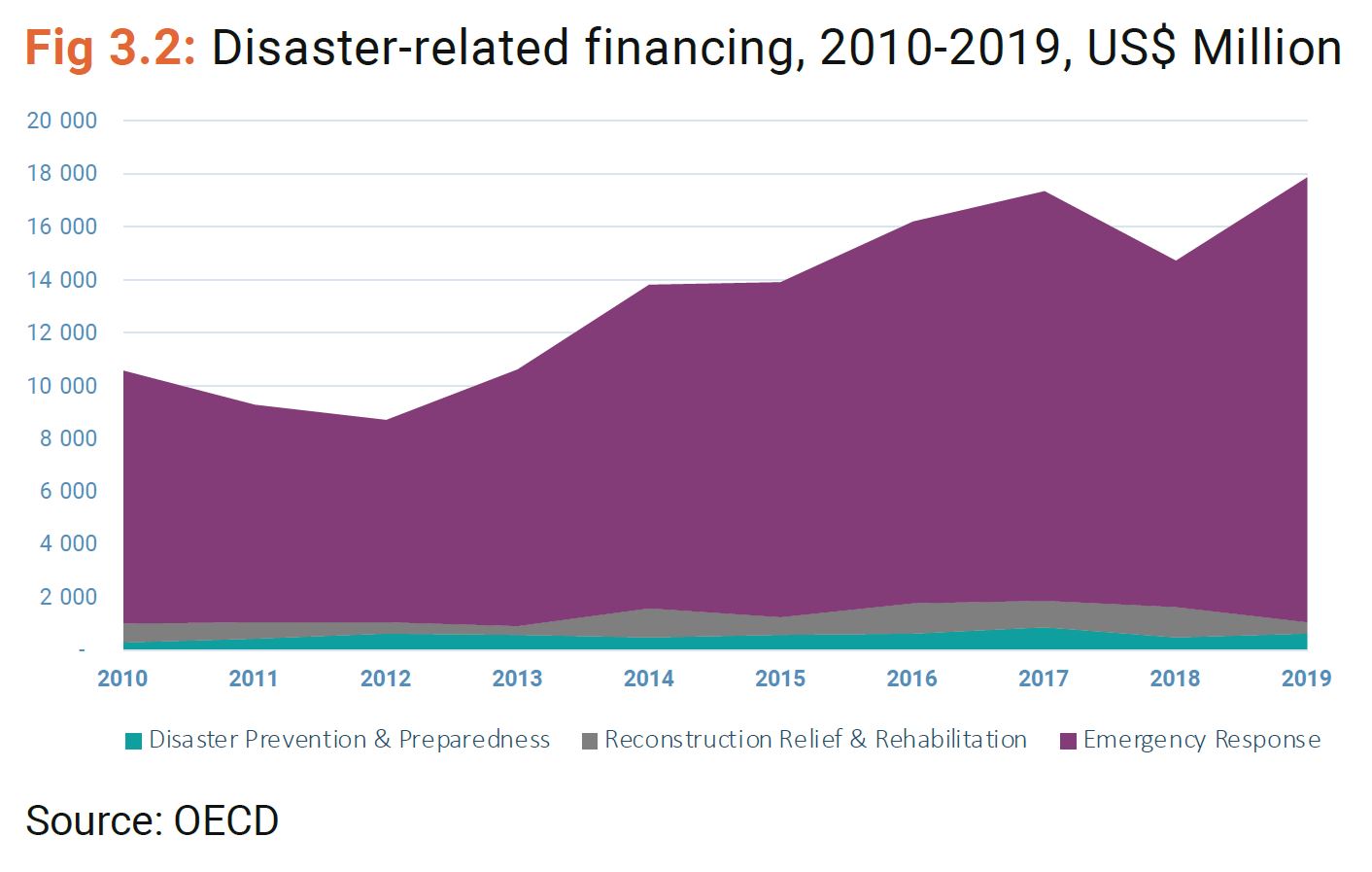
Are disasters linked to conflict?
Disasters caused by natural hazards such as earthquakes, drought, volcanic eruptions, floods, tsunamis and hurricanes could have major societal consequences. Disasters may create grievances that lead to conflict by causing mass disruption to people’s lives and livelihoods. In the immediate aftermath of a major disaster, a country’s physical infrastructure can be affected, preventing the adequate distribution of food and medical supplies; crops are destroyed, giving rise to food shortages; and localised conflicts can take place over resources. Disasters can also destroy key social and political institutions, thus threatening social stability.
The United Nations Security Council conducted a meeting in June 2023 aimed at exploring how climate change affects the capacity of United Nations peacekeeping and special political missions to implement their mandates, from basic access to at-risk populations and their protection, to managing tensions and supporting peace processes and sustainable peace.
The impact of disaster on divided communities can fan the flames of dispute, or perhaps extinguish them. The Indonesian region of Aceh was the scene of a long and bitter conflict between separatists and the central government when the Indian Ocean tsunami hit the coast in December 2004. The devastation seemed to help warring communities to make a new beginning, with a formal compromise in 2005 (Enia, 2008). But the same wave of destruction seemed to make little difference to the civil war in Sri Lanka (Sengupta, 2005).
Somalia drought and conflict forces 3.8 million to flee
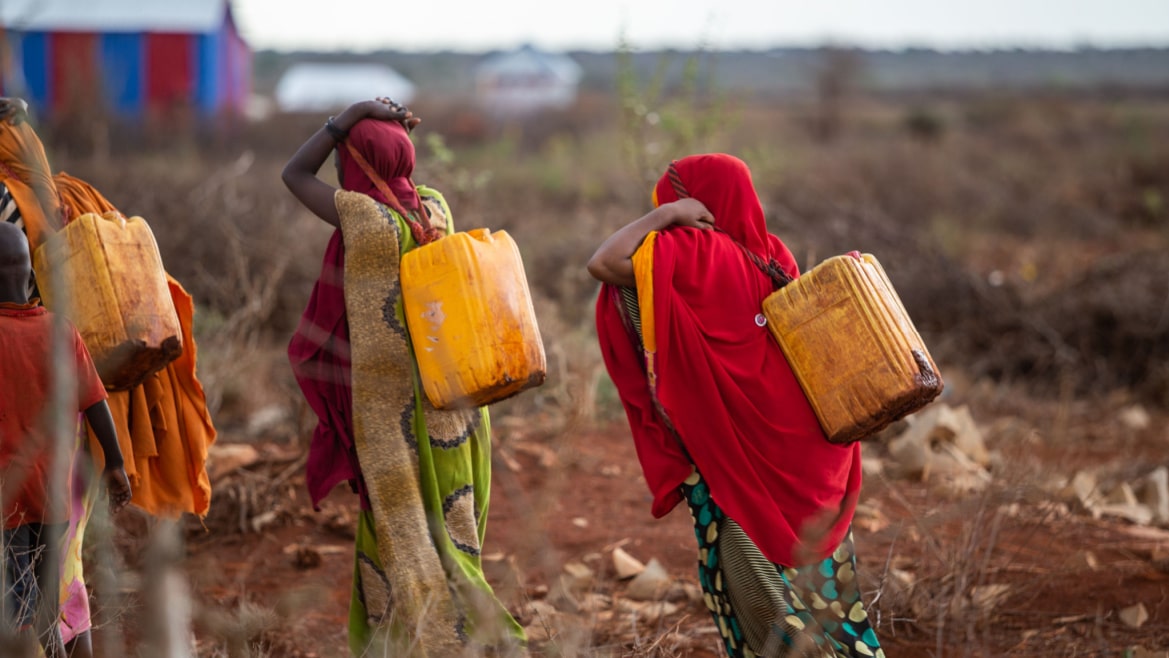
In Somalia, the number of people forced to flee from drought and conflict has reached a new high of 3.8 million people. International organisations now warn hundreds of thousands more could follow in the coming months.
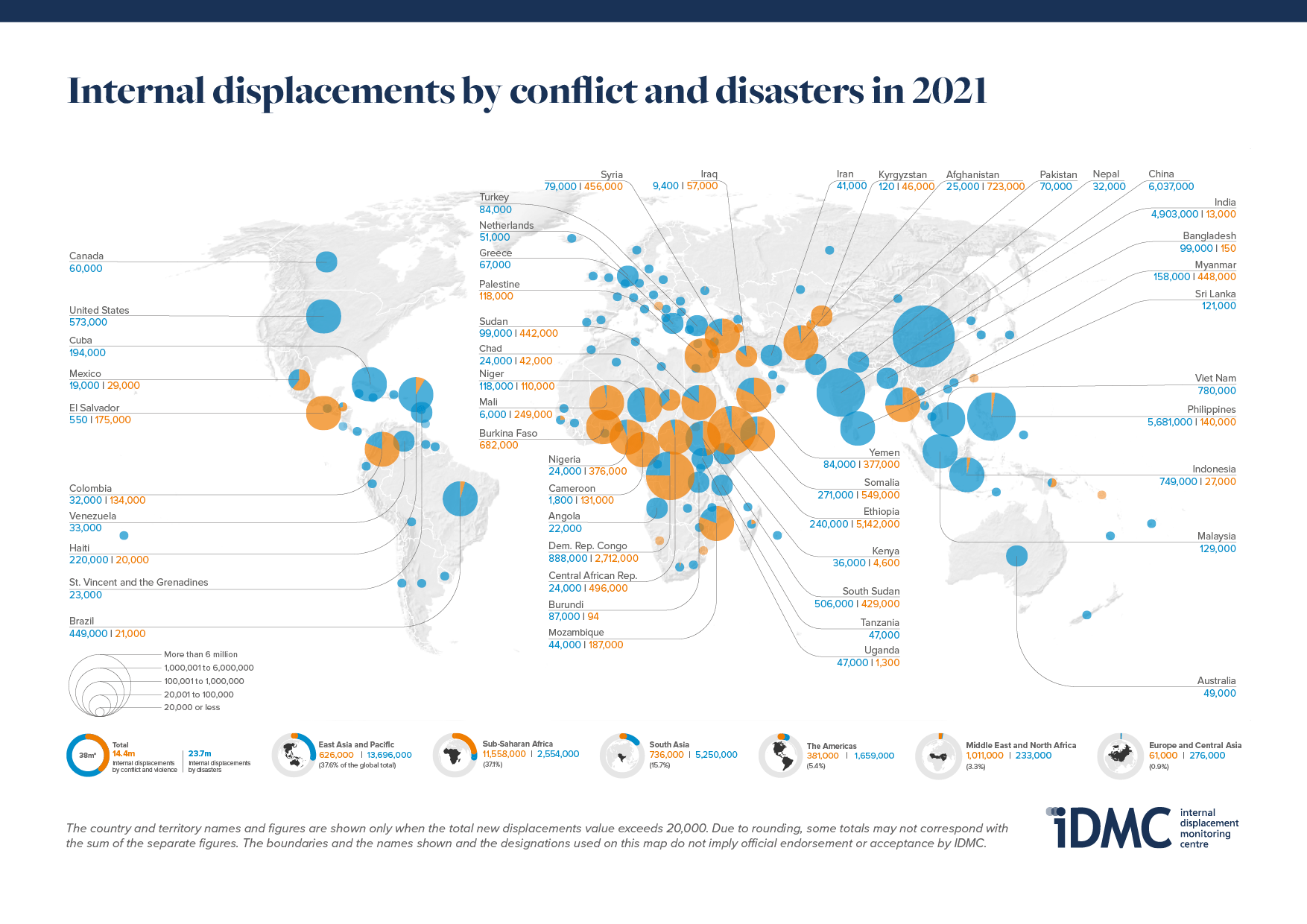
Displacement of populations
The 2022 Global Report on Internal Displacement produced recently by the Norwegian Refugee Council’s Internal Displacement Monitoring Centre evidences the link between disasters and displacement.
- There were 38 million internal displacements in 2021.
- 23.7 million of the 38 million were displaced by weather-related disasters.
- Most of the new and repeated displacements triggered by disasters in 2021 were recorded in East Asia and the Pacific and South Asia, which together accounted for about 80 per cent of the total.
- Many displacements were in the form of pre-emptive evacuations, but the extent of housing destruction in some of the disasters suggests that significant numbers of people face the prospect of prolonged displacement.
- The Nyiragongo volcano in DRC erupted in May, triggering more than 599,000 displacements, the highest figure for a geophysical event in 2021 and the highest for a volcanic eruption since data became available in 2008.
- The global figure for conflict and violence was the highest ever recorded at 14.4 million, and individual countries including Ethiopia, the Democratic Republic of the Congo (DRC) and Afghanistan also registered all-time highs.
Should disaster risk reduction be a mandatory policy?
Disasters represent one of the biggest threats to sustainable development and human safety today. But while the impacts of disaster can be substantially reduced through good disaster risk management, disaster risk reduction policies are not yet mandatory.
According to the Sendai Framework, which is not a legally binding agreement, each State has the primary responsibility to prevent and reduce disaster risk. Responsibilities should be shared by national governments and relevant authorities, sectors and stakeholders. Disaster risk management should protect persons and vital assets while promoting and protecting all human rights, including the right to development. It requires participation by all State institutions and an all-of-society engagement and partnership, paying special attention to those most affected by disasters, especially the poor and including a gender, age, disability and cultural perspective in all policies and practices. Local authorities and communities need to be empowered, and women and youth leadership should be promoted.
Though the Sendai Framework is not a binding document, the agreement has been unanimously adopted and approved by the UN General Assembly. The majority of countries have a Sendai Framework focal point to support its implementation. It encourages the adoption of national and local strategies for disaster risk reduction along with legislative change to bring about improved risk governance. The aim is to create an enabling environment for reducing risks posed by natural hazards, preventing new risks from arising and making communities safer.
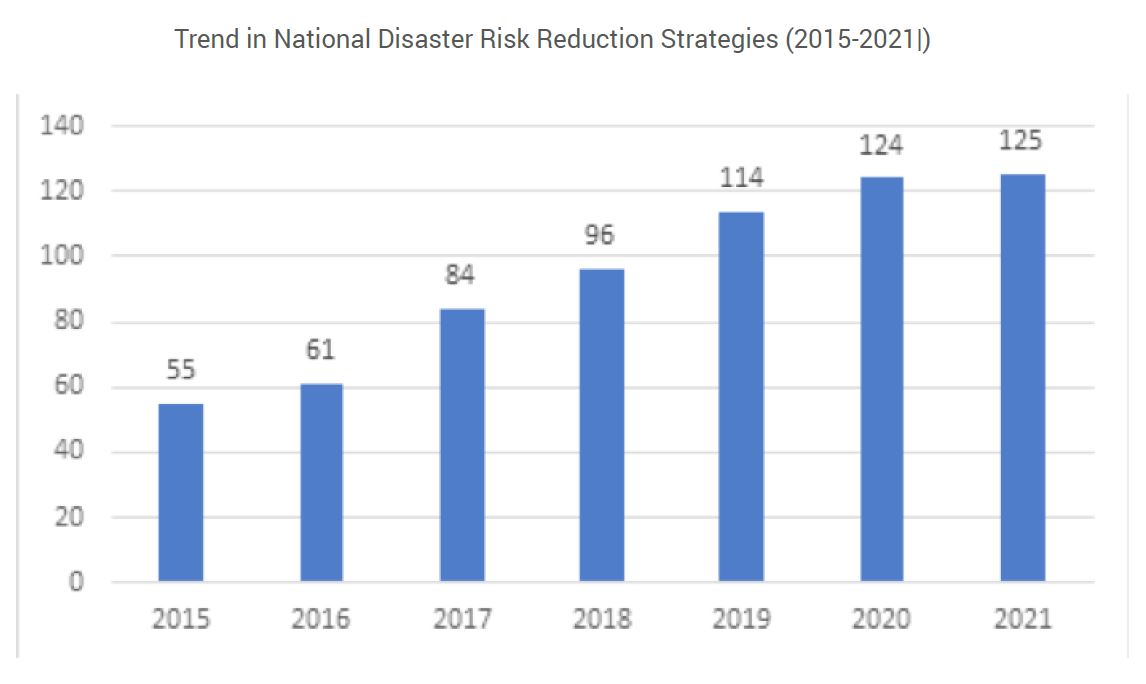
Progress in DRR strategies
The 2023 Target E report highlights the continued efforts made by governments in developing national and local disaster risk reduction (DRR) strategies, aligning them to the Sendai Framework, and fostering integration between DRR, climate change, and sustainable development.
- At a global level, there have been significant advances in developing national DRR strategies since the adoption of the Sendai Framework in 2015.
- At a regional level major progress has also been witnessed. The five regions adopted regional strategies at Regional Platforms, which played important roles in improving risk understanding and awareness, and accelerating DRR implementation.
- At a local level, the number of countries that report to the SFM on having local DRR strategies almost doubled, from 51 in 2015 to 91 in 2022.
Law and disaster risk reduction
Disaster law is increasingly recognised as a vital tool to better protect citizens against disaster risks and to make governments and main disaster risk reduction stakeholders accountable for their policies. As we have seen in media reports, mayors and government representatives can be prosecuted and imprisoned because of failures to plan for and prevent obvious risks to the lives and well-being of their citizens.
In December 2015, The International Federation of Red Cross and Red Crescent Societies (IFRC) and the United Nations Development Programme (UNDP) launched The Checklist on Law and Disaster Risk Reduction and its accompanying guide, The Handbook on Law and Disaster Risk Reduction, to provide practical guidance on this area of law. A new Checklist was developed in 2019.
Climate-smart disaster law in Fiji

In Fiji, the Government of Fiji, national and international disaster responders, are working together to review and integrate their climate and disaster risk management laws for a stronger and more efficient climate-smart disaster risk management system that can reach and engage the people most at risk.